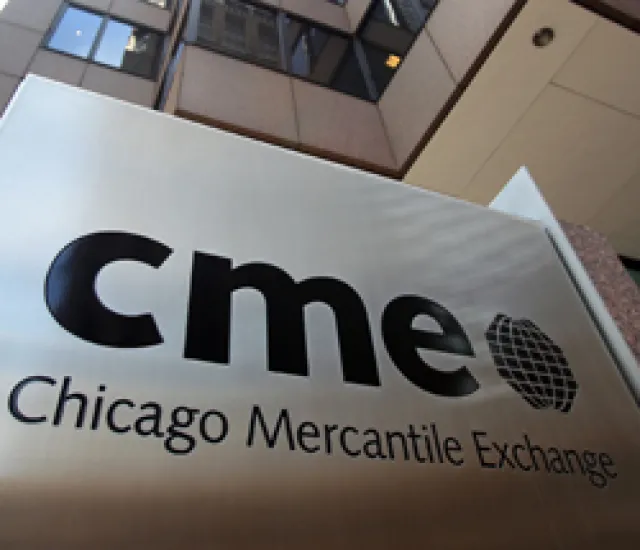As the battle for control of NYSE Euronext turns hostile, there are good reasons to wonder how CME Group, the Chicago-based futures giant, will fare if Deutsche Boerse or the team of Nasdaq and ICE end up with control of the Big Board and its holdings.
NYSE Euronext announced in February that it would sell itself to Deutsche Boerse for about $10 billion. Nasdaq and ICE have gone hostile with a rival bid, now worth about $800 million more than the current value of the Deutsche bid.
CME Group – which was formed by the merger of the Chicago Mercantile Exchange and the Chicago Board of Trade, and now includes the New York Mercantile Exchange – has stayed out of the fray.
It’s easy to understand why CME might not be interested in taking on the NYSE Euronext assets. With a market cap of nearly $20 billion, CME is worth nearly twice as much as NYSE Euronext. CME is much more profitable because it is focused on the quickly growing futures market. NYSE Euronext is known for its presence in the cash market, where it faces withering competition from alternative liquidity providers such as dark pools. CME’s profit margin of 32 percent compares quite favorably to the 14 percent profit margin of NYSE Euronext.
Nonetheless, CME might be making a mistake by allowing its rivals to take control of NYSE Euronext, mostly because of the strategic value of its Liffe derivatives business, according to Ruben Lee, founder and CEO of Oxford Finance Group, a consulting firm in London. Lee, a former fellow at Nuffield College at Oxford University, also is the author of Running the World’s Markets, published this year by Princeton University Press.
“I think the takeover battle for NYSE Euronext effects CME Group very substantially,” Lee says. “From a strategic point of view, it has to try and buy NYSE Euronext to get Liffe.”
What could the appeal possibly be? The issue comes down to how CME Group can maintain its strong growth, now humming along at 14 percent on a quarter-over-quarter basis. At the group level, NYSE Euronext is moving in reverse, declining at a pace of 4 percent. But its Liffe derivatives group has more potential. Its revenue for the first quarter was $236 million, up 5 percent on a year-over-year basis and 26 percent on a sequential basis.
One strategic option for CME is to buy NYSE Euronext, spin off its cash business to a buyer such as Deutsche Boerse or Nasdaq, and keep Liffe for itself. The transaction would dilute CME growth, but Lee says it would be a strategic mistake to avoid a deal for that reason.
CME’s domestic strategy of growth through acquisitions has little room to run. The few options – buying ICE, for example – are unlikely to happen. It can and should focus on developing new contracts, but Lee says that is an uncertain path. “How much growth this will bring, no one knows,” he says. “They are very unlikely to provide significant sources of revenue in the future. It is a largely unpredictable and uncertain strategy. The CME should continue doing it, but you cannot build your future on that.”
No doubt, CME will benefit from new regulations in the US that will force the central clearing of derivatives – a natural business for CME. “Maybe they can see a bright future in that,” Lee says. But again, it probably isn’t sufficient as a sole engine of growth. Plenty of other exchanges and banks are piling into that market.
By process of elimination, CME must look outside the US for a good part of its growth. But how? It has a strategic partnership with Bovespa, of Brazil, and each exchange owns 5 percent of the other. Such strategic partnerships don’t offer a significant share of revenue, though. It could develop new contracts for the global market, but such propositions are no more certain outside of the US than they are in the US.
That leaves the possibility of outright acquisitions in the international market – a crucial option, according to Lee. But what should it buy? It could try the Singapore Exchange, which said today that it is open to talks with Hong Kong. But there are few assets on offer, other than Liffe, that will give CME the global platform it needs. “In fact, I can’t really think of any,” Lee says. “It would be a mistake not to try to buy Liffe.”






